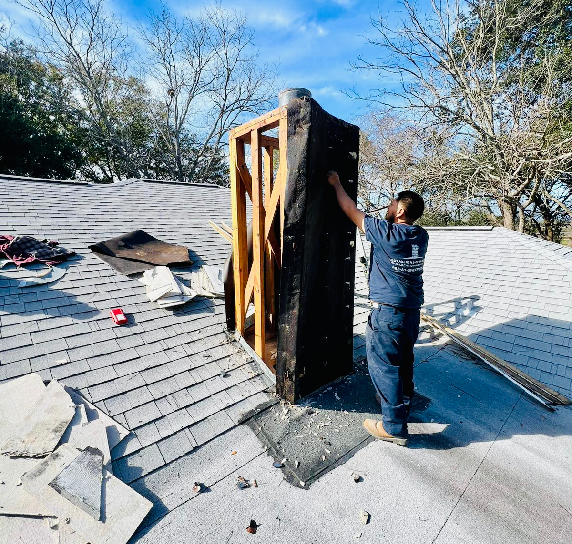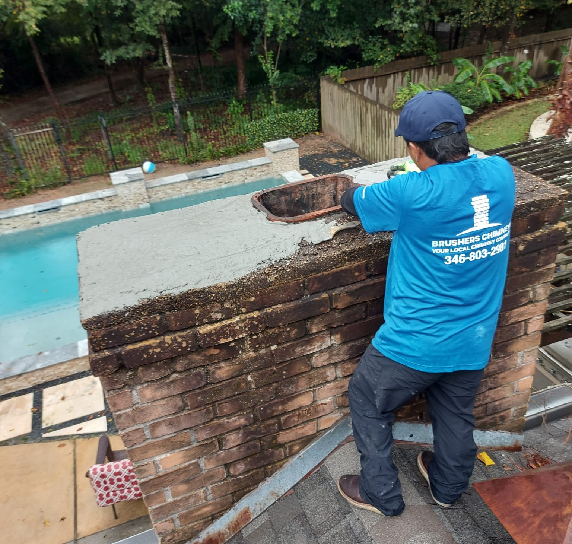
Inspection
First, we’ll conduct a thorough inspection of your fireplace and chimney to see what needs to be fixed. We’ll also identify anything that may not need immediate repair but should be monitored.
Repair Plan
After the inspection, we’ll make a plan to fix the problems. This might include repairing cracks, cleaning the chimney, and installing new parts if needed.
Testing
Once the repairs are done, we’ll test your fireplace by lighting a fire to make sure everything works correctly.
Chimney repairs can help you in many ways, and often you might not even realize that your chimney is causing an increase in energy bills or safety issues for your family.
Chimney repairing, also known as chimney maintenance, is a service that helps to get rid of any problems with your fireplace. This includes fixing cracks and holes in the structure, making sure there are no blockages within it, replacing loose mortar joints, etc.
Not only can these things prevent you from using your fireplace, but they can also cause the build-up of dangerous gases within your home.Chimney leaks are one of the biggest signs of a problem with an important part of your chimney’s structure. At Brushers Chimneys, we perform a variety of leak-related repairs and can get your chimney back into top condition.
Chimney flashing is the metal covering that seals the point where your chimney meets your roof. If the flashing gets damaged or is installed incorrectly, it can cause leaks. When a chimney needs new flashing, we remove and reseal the metal flashing and create a weatherproof capping to stop leaking at the roof line.
Eventually, the bricks in your chimney can crack or spall. This means the very surface of the brick literally peels or chips away. Cracks and spalls create possible entry points for water, allowing it to leak into the home. Cracked and spalled bricks can be replaced. If the damage is just to the surface of the bricks, it can be repaired with a waterproof sealant to prevent them from decaying or leaking further.
The chimney crown is the top part of the chimney and is designed to keep water away. Cracks or degradation of the crown can allow water into the chimney. To fix problems with the crown, we may need to fill cracks or rebuild the crown entirely to help it keep shedding water off of the chimney.
If your chimney has siding or trim, any damage or rot in these areas may cause the chimney to leak. Fireplaces are often designed to blend in with the home’s exterior, and siding and trim work are usually a good option. If any of these components start to fail, it’s often best to repair or replace them to keep the chimney sturdier and prevent water from entering the masonry or your home.
The chimney flue is the pathway that allows escape of smoke and combustion gases from the home. Cracks and damage can cause leaks in the flue, exposing homeowners to serious hazards like carbon monoxide poisoning. Repair and replacement of a chimney flue lining generally involves sealing cracks.
Tuckpointing—repairing the mortar between bricks in a chimney—is a crucial aspect of maintenance and preservation. When the mortar cement between bricks is eroded or cracks, water can seep into the chimney, weakening its integrity and potentially causing leaks. Tuckpointing re-bricks small gaps and strengthens your chimney’s health and quality.
A chimney damper uses a plate to open and close the air and smoke openings in the chimney. If the damper is damaged or stuck, it can allow water to enter the chimney and leak into the home. Repairing or replacing the damper ensures it operates correctly and the chimney stays water tight.
The gas logs in the chimney may be subject to wear and tear from use, and can actually leak if the chimney collapses. If the gas logs are old or damaged, they can also be replaced. This will ensure that the gas logs are working correctly and don’t leak if the chimney were to collapse.
Justin Vaughn
Cracks or holes in your fireplace can let dangerous carbon monoxide gas into your home. This gas is invisible and you may not realize you have a leak until it’s too late. Chimney repair keeps everyone in your home safe.
Blockages in your chimney can stop air from moving properly. This makes your HVAC work harder to keep your home warm, which means higher energy bills. By removing these blockages, chimney repair saves you money.
Fixing your fireplace can also make your home more valuable. When it’s time to sell, buyers will notice you have a well-maintained fireplace. The other side of the coin is that a poorly-maintained fireplace can be a turnoff for potential buyers.
2. How do I know if my chimney needs repair? Look for signs like cracks in the chimney, crumbling bricks or mortar, a rusted damper, or a smoky smell. If you notice any of these, it’s time to call a professional.
3. How often should I have my chimney inspected? It’s a good idea to have your chimney inspected once a year, especially if you use your fireplace often. Regular inspections help find problems early before they become serious.
4. What causes chimney damage? Chimney damage can be caused by weather (especially rain and freezing), regular use, and soot and creosote buildup from burning wood. Animals and birds can also cause damage.
5. What is a chimney cap, and why do I need one? A chimney cap is a cover that sits on top of your chimney. It keeps out rain, snow, debris, and animals. This helps prevent blockages and water damage and keeps your chimney working well.
6. How long does a chimney repair take? The time it takes to repair a chimney depends on the amount of damage there is. Small repairs might take a few hours, bigger repairs could take a few days. We can give you a better idea after inspecting your chimney.
7. How much does chimney repair cost? Just as with timing, the cost of chimney repair varies depending on what needs to be fixed. Small repairs might cost a few hundred dollars, while bigger jobs could be more expensive. It’s a good idea to get an estimate from a professional.
8. What is tuckpointing, and when do you need it? Tuckpointing is the term for fixing the mortar between the bricks in your chimney. You need it whenever the mortar starts to crack or crumble. This helps keep the chimney strong and safe and prevents further damage.
9. How can I prevent chimney damage? Regular inspections and cleanings, installing a chimney cap, fixing any problems right away, and using your fireplace properly can all help prevent damage. Avoid burning unseasoned wood, which can cause more soot and creosote buildup.


We offer trustworthy & reliable chimney sweep service to thousands of satisfied customers in Houston and surrounding areas.

We are top trained professionals with experience in chimney sweeping, repair, and maintenance.

Guaranteed cleaning and repairs.

You can trust and hire Brushers Chimneys as we offer top notch service quality at a very competitive rate.

Houston’s top-rated chimney cleaning company on Google with thousands of satisfied customers.
Hire us for Chimney Inspection, Sweep, and Repair in Houston, San Antonio,
Austin, Dallas, and surrounding neighborhoods. Call us today to see
if we service your area!

10103 Fondren Rd #375, Houston, TX 77096